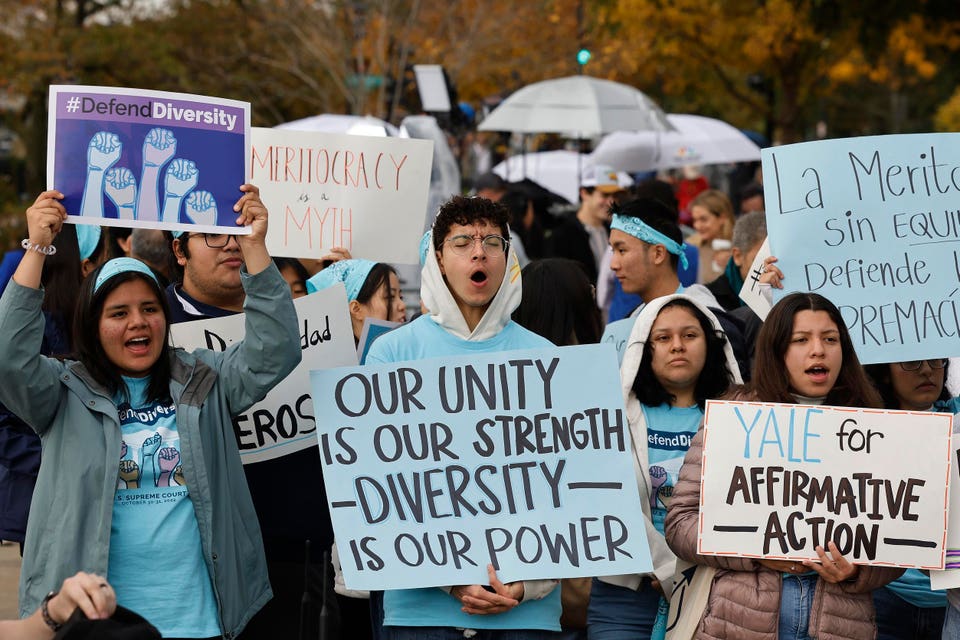Today the U. S. Supreme Court issued a ruling that severely limits the use of affirmative action in college admissions.
In the ruling, Chief Justice John Roberts wrote that a student “must be treated based on his or her experiences as an individual — not on the basis of race. ” In her dissent on the ruling, Justice Sonia Sotomayor wrote that the majority decision rolled “back decades of precedent and momentous progress” and “cemented[ed] a superficial rule of colorblindness as a constitutional principle in an endemically segregated society. ” While colleges are grappling with how to move forward with their admissions process based upon this ruling, inevitably, companies will also start to evaluate their own hiring practices.
Many companies across a number of industries have been working hard to build diverse teams. Increasingly, it is not becoming just a best practice for brands to have teams that are representative of the people it serves, but a necessity. Representative teams are better equipped to serve a diverse customer base due to lived experiences, broader perspectives, and a deeper degree of empathy for the people they serve.
Serial entrepreneur and investor Mark Cuban recently told a group of entrepreneurs that building representative teams is the way to go, “ I call it good business. It means taking the people you’re selling to and making sure your workforce looks like them, and making sure you reflect their values and being able to connect to that. ” Representative teams are less likely to make mistakes that result in culturally insensitive and inappropriate advertising.
In addition, a growing number of consumers expect the brands they engage with to have diverse teams. But even though representative teams perform better, and consumers want brands to have diverse teams, many companies still struggle to diversify their teams. Jerry Daykin is the head of global media at Beam Suntory, and the author of the book Inclusive Marketing.
In the book Daykin goes into more detail about why representation matters to both your customers and your brand. During our chat on the Inclusion & Marketing podcast, he mentioned that the marketing industry on the whole has struggled with representation, and that has been costly. Daykin referenced a World Federation of Advertisers (WFA) study that showed the industry has a lot of work to do with regard to representation “almost every minority you can name is underrepresented in the industry and also likely to have a worse experience of working in the industry.
You could argue the problem at the heart of the matter. If the industry itself was properly inclusive and represented everyone, we probably make better work. ” One of the major reasons brands struggle to diversify their teams is because they are leaving building a representative team up to chance.
They focus their efforts on diversifying their pool of candidates rather than focusing on hiring who their team needs. When coaches and management of sports team are working to build championship teams, they identify holes and weak points within their existing group of talent, and then go off in search of candidates to fill those areas. They don’t put out a general call for talent, they get specific about the kind of player they need.
As marketers and leaders, as you see that your team isn’t representative of your customer base or the customers you want to serve in the future, focus your efforts on hiring the specific type of candidate, rather than building a diversified list of candidates to interview. In this episode of the Startup podcast , Gimlet Media CEO Alex Blumberg talked about their quest to hire a Black editor, because that’s what their team needed for some of the shows they were producing and the audience they were building. A client I worked with last year spent time specifically recruiting for bilingual staff, as they worked to grow their base of Spanish-speaking customers .
To ensure you hire a team that is representative of your customers, you can’t take a colorblind approach. A colorblind approach has a long history of results in growing homogenous teams, rather than diverse ones. Of course including various dimensions of diversity into the equation does not mean that you are by any means lowering your quality standard.
Even thinking that you’d have to is problematic. Diverse talent isn’t sub-standard, as many people wrongly assume. But it does likely mean more intentional recruiting efforts and expanding beyond your usual ways of finding talent to ensure you find who your team needs.
Colorblindness will not lead you to building a diverse team. Focus and intentionality in building a representative team will yield the results you seek. .
From: forbes
URL: https://www.forbes.com/sites/soniathompson/2023/06/29/brands-shouldnt-be-colorblind-in-building-teams-despite-scotus-affirmative-action-ruling/



